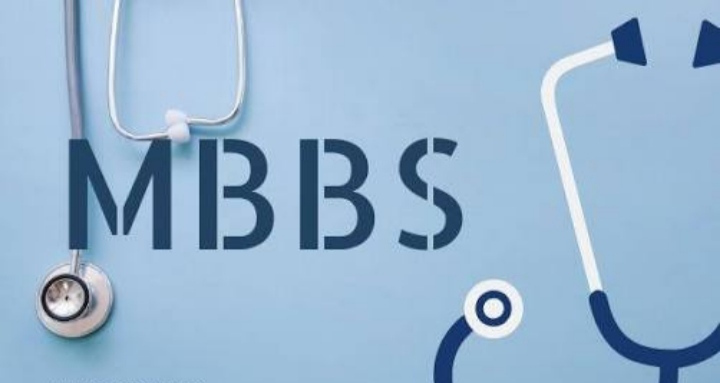
Shimoga Institute of Medical Sciences,Shimoga
History :
T. G. McGann was a senior surgeon in Princely state of Mysore, India. He was senior surgeon with Government of Mysore from 1885-1896 and he later appointed as official doctor to Maharaja of Mysore and his family, the Darbar Surgeon from 1905 to 1906. He put efforts to improve the lives of native people, tried to prevent epidemics like cholera and impressed upon the Government about “the importance of improving village sanitation,….improving and conversing the water supply and promoting general cleanliness, by preventing the storage of manure in the streets and backyards of houses, the defilement of ground in and immediately around towns and villages would be a distinct gain, would improve the general health of people, diminish their liability to fevers, bovel complaints and cholera, and tend to check the spread of the last named disease on its occurrence amongst them”.
McGann worked in Shimoga hospital maintained by Mysore Government and exclusively worked to control Malaria which was rampant in the area during 19th century. He worked in Shimoga for more than three decades and retired in 1908, returned to United Kingdom, but again came back to Mysore and stayed there till his death in 1936.
A Hospital in memory of McGann was constructed at Shimoga, (a part of Mysore State) during 1932-1935 and it is called McGANN Hospital, Shimoga. The foundation stone for the hospital was laid by then Maharaja of Mysore, K
Vision :
Our vision is to provide good quality and comprehensive healthcare to all.
Mission :
- To provide appropriate, adequate, acceptable, effective and efficient healthcare services.
- To be the centre of excellence for medical research and academics.
Bio Medical Waste Management System
The wastes generated from health care units are generally classified as infectious and non-infectious. The infectious health care wastes are termed as ‘bio-medical wastes’ and are considered to be potentially hazardous in nature. The disposal of untreated bio-medical wastes mixed with non-infectious health care wastes or other general municipal wastes poses an environmental threat and public health risk. Indiscriminate disposal of untreated bio-medical waste is often the cause for the spread of several infectious diseases. It is also responsible for the nosocomial diseases i.e. the hospital acquired diseases to the healthcare personnel who handle these wastes at the point of generation. Moreover, this is equally harmful to persons involved in the bio-medical waste management i.e. segregation, storage, transport, treatment and disposal. Apart from the above, a good amount of bio-medical wastes such as disposable syringes, saline bottles, I.V. fluid bottles etc. are picked up by rag pickers and are recycled back into the market without any disinfection procedures. It is imperative, therefore, to adopt an appropriate environmentally safe method for the disposal of the hospital wastes.
Bio Medical Waste
Any waste, which is generated during the diagnosis, treatment or immunisation of human beings or animals or in research activities pertaining thereto or in the production or testing of biological or in health camps, including the categories mentioned in Schedule
Dr. O S Siddappa, MS. M.ch (Paediatric Surgery)
Director cum Dean
Shimoga Institute of Medical Sciences
N.H.206, Sagara Road,
Shivamogga, Karnataka – 577201
Contact no: 08182 - 229933
Email-id: simsshivamogga@gmail.com
M.B.B.S.

Bachelor of Medicine, Bachelor of Surgery (Latin: Medicinae Baccalaureus, Baccalaureus Chirurgiae; abbreviated in many ways, most commonly MBBS, but also MB ChB, BMBS, MB BCh, MB BChir), is the primary medical degree awarded by medical schools in countries that follow the tradition of the United Kingdom. The historical degree nomenclature states that they are two separate undergraduate degrees. In practice, however, they are usually combined as one and conferred together, and may also be awarded at graduate-level medical schools.
Bachelor of Medicine and Bachelor of Surgery (MBBS), is a professional degree in medical science. A person holding the MBBS degree becomes a certified medical practitioner. The duration of MBBS course is five years and six months including one year of rotational internship at hospitals, health centres, and health camps organised by non-profit organisations (NGOs). MBBS course syllabus includes studies on anatomy, pharmacology, pathology as well as community health & medicine, paediatrics, and surgery. The syllabus, prescribed in such a way that MBBS degree holders can choose a specialisation for further majoring and practising medicine. The career specialisations for MBBS students are Nephrology, Cardiology, Gynecology, Anesthesiology, Organ Transplant, Endocrine, and General Surgery, etc.
MD - Anaesthesiology
The purpose of PG education is to create specialists who would provide high quality health care and advance the cause of science through research & training. A post graduate specialist having undergone the required training in anesthesiology should be able to recognize the health needs of the community. He or she should be competent to handle effectively medical problems and should be aware of the recent advances pertaining to his/her specialty. She/he should be highly competent anesthesiologist with broad range of skills that will enable him/her to practice anesthesiology independently. The PG student should also acquire the basic skills in teaching of medical/para-medical students. She/he is also expected to know the principles of research methodology and modes of consulting library. She/he should attend conferences, workshops and CMEs regularly to upgrade his/her knowledge. The purpose of this document is to provide teachers and learners illustrative guidelines to achieve defined outcomes through learning and assessment. This document was prepared by various subject-content specialists. The Reconciliation Board of the Academic Committee has attempted to render uniformity without compromise to purpose and content of the document. Compromise in purity of syntax has been made in order to preserve the purpose and content. This has necessitated retention of “domains of learning” under the heading “competencies”
- Log in to post comments
- 50 views
